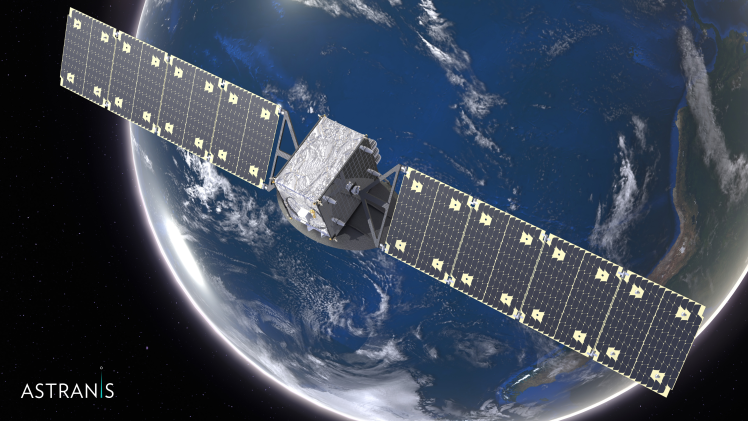Andreessen Horowitz is venturing into space with today’s announcement that it’s leading an $18 million round in Astranis. The San Francisco-based startup is launching out of stealth today with plans to build its first commercial telecommunications satellite. Y Combinator, Fifty Years, Refactor Capital, and Indicator Fund also participated in the round.
Cofounded in 2015 by Purdue and MIT rocket scientists John Gedmark and Ryan McLinko, Astranis says it is building smaller, lower-cost telecommunications satellites to bring internet connectivity to the most remote places on Earth.
“Our satellites are about the size of a mini-fridge, much smaller than the double-decker bus-sized satellites that are traditionally used for telecommunications,” wrote Astranis CEO John Gedmark, in an email to VentureBeat.

Above: Astranis team
Gedmark says the added value here is that Astranis’ satellites live in geostationary orbit (GEO), where the satellite is fixed above a specific point on Earth.
June 5th: The AI Audit in NYC
Join us next week in NYC to engage with top executive leaders, delving into strategies for auditing AI models to ensure fairness, optimal performance, and ethical compliance across diverse organizations. Secure your attendance for this exclusive invite-only event.
“Other micro-satellites companies are all working on low earth orbit (LEO), where satellites rotate around the Earth every 90 minutes,” he added. “If you want to provide internet access in LEO, you need hundreds or thousands of satellites to ensure complete coverage. In GEO, we can get people connected with the first satellite we launch.”
In order to achieve this, Gedmark says he and cofounder McLinko have developed proprietary software that makes their satellites cheaper and faster to build, launch, and operate.
Astranis manufactures its satellites in San Francisco and expects to launch its first commercial satellite in 2019. Potential customers include telecommunication companies and carriers. The Astranis satellite price tag will be in the tens of millions of dollars, Gedmark said.
“Cell towers can be relatively cheap to build and install, but solving the problem of connecting those cell towers to the internet is currently difficult and expensive,” wrote Gedmark. “By providing lower-cost satellite bandwidth for telcos and carriers to lease, they can put down towers and get people online in places they never would have been able to … otherwise.”
This is something that could be immensely beneficial to emerging markets, which often suffer from poor connectivity issues. Facebook is already addressing this with its solar-powered drones. Gedmark is skeptical about this effort, however.
“That approach could pay huge dividends in the future, but as best we can tell they’ll likely take many years and huge sums of investment to come to fruition,” he wrote.
Other competitors he names are large incumbents like Boeing and Lockheed Martin, but also newer companies like OneWeb and SpaceX, which are also using small satellites.
“They are putting their satellites into LEO, however, and will need to launch hundreds of satellites before they are operational,” he wrote.
A lot of companies seem to be focusing on LEO at the moment. For example, LeoLabs, which is a spin-off of SRI International, monitors space debris in LEO. So Astranis may be on to something by zooming in on GEO while the field is relatively open.
The Y Combinator graduate currently has 22 employees.

